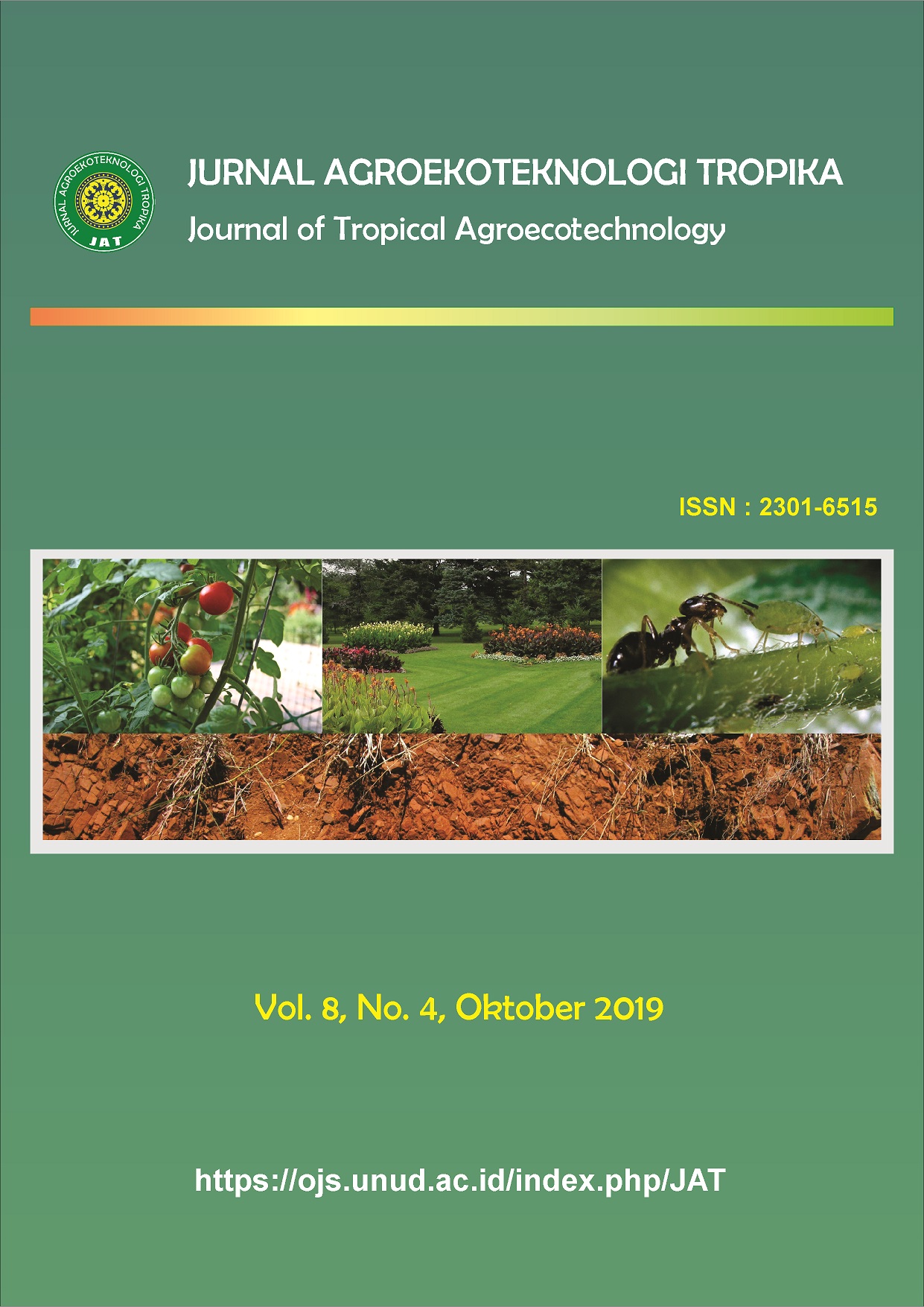Tingkat Fekunditas Nematoda (Meloidogyne spp.) pada Beberapa Tanaman yang Tergolong Familia Solanaceae
Abstract
Fecundity of Nematode (Meloidogyne spp.) in Some Plants Belonging to the
Solanaceae Family
The Solanaceae family is a plants that has a function to meet human food.
Although the production of the Solanaceae Family in Indonesia is quite high, it has
not been able to fulfill the Indonesian Population needs. This is caused by several
factors and one of them is the attack of pests and diseases that can cause crop failure.
Pest that causes a decrease in the Solanaceae family is root bran nematodes,
(Meloidogyne spp.) The purpose of the study is to determine the level of penetration
and fecundity of nematodes in several plants belonging to the Solanaceae family, and
to obtain species host plants that are less favored than the plants tested Thar can be
used as an alternative control of nematoda. This study using a Completely
Randomized Design (CRD), with 4 types of treatment each using 6 replications with
2 research objects to obtain 48 units/plant pots. The results is penetration rate and
fecundity rate were highest in tomato plants, then in eggplant plants, chili plants, and
the lowest in cayenne. The result can be used as an alternative to reduce the
population of nematoda (Meloidogyne spp.) in the field.



